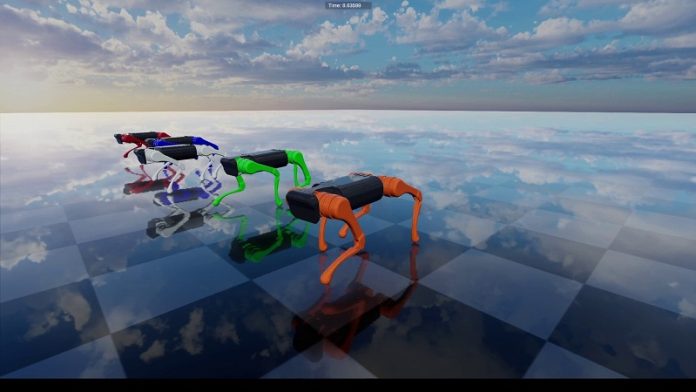
In a breakthrough that brings us closer to robots that move like real animals, scientists have developed an artificial intelligence (AI) system that lets a four-legged robot adapt to unfamiliar and challenging terrain—all on its own.
Inspired by the way animals change the way they walk to suit different environments, this innovation could one day help robots explore disaster zones, collapsed buildings, or even distant planets where conditions are unpredictable and dangerous.
The study, led by researchers at the University of Leeds and University College London (UCL), has been published in Nature Machine Intelligence.
It shows how the team trained a robot, nicknamed “Clarence,” to change its gait—how it walks or runs—just like animals such as dogs, horses, or cats.
These animals instinctively adjust their steps to save energy, stay balanced, or move faster when needed. Until now, robots needed to be told when and how to switch gaits, limiting their use in real-world, risky environments.
Clarence was different. Instead of learning how to walk on each surface through real-world practice, the robot was trained entirely in a computer simulation.
It used deep reinforcement learning, a type of AI that allows the robot to learn by trial and error across hundreds of different virtual environments.
Within just nine hours of virtual training, Clarence developed a set of strategies to decide when and how to switch between different gaits—like trotting, bounding, or running—depending on the ground beneath its feet.
Once the training was done, the researchers uploaded Clarence’s new “skills” to the physical robot. When they tested it on real surfaces like loose woodchips, bumpy roots, or muddy grass, it adapted instantly—without needing further adjustments.
Even when its legs were deliberately hit with a broom to simulate tripping, Clarence recovered smoothly and kept moving.
Lead researcher Joseph Humphreys explained that this is the first time a robot has been trained to not only walk using different gaits, but also to remember the best ones and adjust them in real time based on its surroundings.
He compared the method to the movie The Matrix, where characters learn complex skills instantly by uploading them into their brains.
What makes this AI system so powerful is that it combines three key things: the ability to switch gaits when needed, a memory of past movements, and the ability to tweak movements on the fly. Together, these mimic the kind of instinctive control animals have. And the robot managed to achieve all this without using sight, sound, or any external sensors—just its built-in motion system and learned behaviors.
Senior author Professor Yaochu Zhou from UCL said their aim was to give robots the kind of strategic intelligence animals use, rather than programming specific instructions. That way, robots can handle real-world surprises safely and efficiently, without being told what to do in every situation.
While the current research focused on one dog-sized robot, the team believes the same approach can be applied to other four-legged robots of different sizes.
In the future, they hope to add more abilities—like climbing steep terrain or jumping long distances—making robots even more useful in places humans can’t safely go.
Source: University of Leeds.



